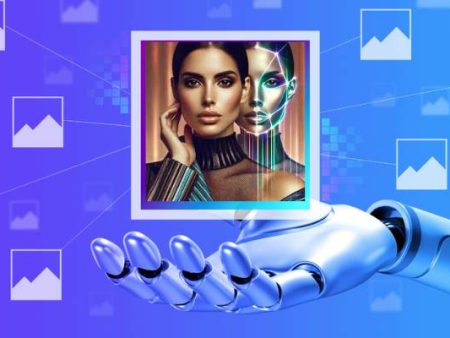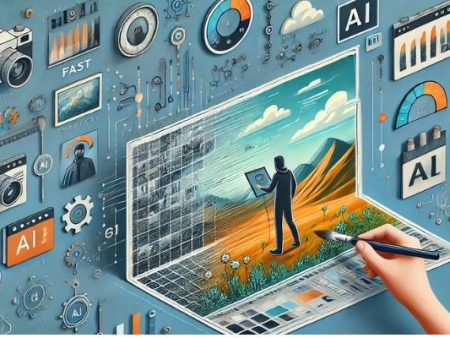There’s something strangely tender about holding an old photograph in your hands. The edges curl a little, the paper smells faintly of dust, and the faces staring back at you are often frozen in a moment long before you ever existed.
These photographs aren’t just images—they’re vessels of memory, cultural records, family legacies.
But if you’ve ever pulled out a shoebox of family photos, you’ve seen the damage time can do. Cracks, stains, fading, entire corners missing.
For decades, photo restoration has been painstaking, requiring skilled human editors with a meticulous eye.
Now, with AI stepping into the darkroom (or rather, the digital workspace), restoration is faster, more accessible, and in some ways, shockingly good.
Yet with this ease comes an entire web of new questions—about authenticity, creativity, ethics, and whether we’re losing something in the process.
The Promise: Why AI Photo Restoration Feels Revolutionary
AI-powered tools like Remini, VanceAI, and Photoshop’s Neural Filters have made restoration astonishingly accessible. Tasks that once required hours—like filling in cracks, reconstructing missing features, or enhancing blurry faces—now happen in seconds.
What’s happening under the hood is fascinating. AI doesn’t simply “fix” the damage pixel by pixel; it analyzes massive datasets of faces, textures, and scenes to predict what the missing or faded parts should look like. In other words, it doesn’t just repair—it reimagines.
That’s why the results often feel magical. A blurry portrait of your grandmother suddenly reveals the texture of her skin, the shine in her eyes, even the folds of her dress.
For families, this isn’t just about images—it’s about reconnecting with memories that felt lost.
The Double-Edged Sword: Issues With AI
And yet, magic always has a price. The rise of AI restoration highlights what I’d call the issues with AI: time-saving or creativity-killing dilemma.
- Time-saving: AI dramatically reduces the hours of labor required for restoration. Families who couldn’t afford professional retouching services now have tools at their fingertips. Museums can digitize and restore massive archives faster than ever.
- Creativity-killing: But in saving time, are we losing artistry? Human restorers make judgment calls based on cultural knowledge, empathy, and subtle storytelling. AI, on the other hand, simply produces what it thinks “fits.” That may look clean, but sometimes it sterilizes the image, removing the human texture of time.
For me, this tension feels unresolved. On one hand, I’m grateful my great-grandfather’s faded war photo can be brought back.
On the other, I wonder if the AI version is really “him”—or just a plausible, machine-generated facsimile.
How Filters vs Traditional Editing: Works
This debate reminds me of the old tension between filters and manual editing. Back in the early Photoshop days, editors scoffed at filters as lazy shortcuts. But eventually, filters became tools in every editor’s kit.
So here’s the crux: how filters vs traditional editing: works isn’t just a technical distinction—it’s philosophical.
- Traditional editing was manual, deliberate, and interpretive. An editor might leave certain scratches in place because they added character, or enhance shadows to bring out a mood.
- AI-driven filters “decide” for you. They can clean, sharpen, or recolor instantly—but with less space for intentional human nuance.
In restoration, this matters deeply. Do we want every old photo smoothed to perfection? Or should some flaws remain, like wrinkles in history itself?
Can AI Truly Understand Aesthetic Works?
This is where things get uncomfortable. Can algorithms really grasp beauty, nostalgia, or the emotional weight of an image? The how AI truly understand aesthetic works question cuts to the heart of this revolution.
When I look at an old, slightly torn photo of my grandmother, the imperfections are part of the aesthetic.
They remind me it has survived decades, fires, moves, floods, all while carrying memory. An AI might erase those scars, delivering a pristine but soulless facsimile.
To me, that misses the point. Restoration isn’t always about “fixing.” Sometimes it’s about honoring.
And while AI can mimic aesthetics, I don’t think it truly understands them. At least not in the way humans do—with empathy, memory, and cultural resonance.
Guide to Face-Swapping and Deepfake Editing
The conversation gets even more tangled when you add manipulation into the mix. Restoration tools aren’t just used for reviving—they can also reconstruct or even invent faces.
That’s where the guide to face-swapping and deepfake editing: concern comes in.
AI doesn’t just restore—it can alter. Imagine taking a faded group photo and using AI to “improve” one person’s face by unintentionally substituting features from its training data.
Suddenly, the restored image isn’t historically accurate—it’s a deepfake dressed as a memory.
And if you think this sounds far-fetched, consider that deepfake technology has already been used to create manipulated historical footage, celebrity hoaxes, and even counterfeit family photos.
The risk here isn’t just aesthetic—it’s ethical. How do we trust restored images when AI is capable of fabricating details that were never there?
Case Studies: AI in Action
- Holocaust photo restoration projects: Some groups have used AI to colorize and restore Holocaust-era photographs. Critics argue that while the images feel more “alive,” they risk misrepresenting history if the colors or details are inaccurate.
- Smithsonian Archives: Institutions are experimenting with AI to preserve and digitize massive archives. It’s effective, but curators stress the need for careful oversight, since AI can unintentionally “over-correct” historical artifacts.
- Consumer apps: Families worldwide now upload old wedding photos, war portraits, or childhood snapshots into AI apps. For many, the results are breathtaking—but they’re also homogenized, often smoothing individuality into a polished template.
Emotional Nuances: Memory vs Simulation
I’ll admit, I’ve had mixed feelings when I’ve used these tools myself. Restoring my grandfather’s old Navy portrait with AI brought tears to my eyes—I could finally see his eyes clearly.
But later, I noticed something strange: the AI had subtly changed the curve of his smile. It was small, but it bothered me.
Was that still him? Or just a version that fit an algorithm’s idea of what a smile should look like?
This is the paradox of AI restoration. It reconnects us with memory, but it also risks distorting it. And sometimes, we may not even notice.
Statistical Perspective
The adoption of AI photo restoration is growing rapidly:
- Remini, one of the most popular restoration apps, has been downloaded more than 100 million times globally (Statista).
- Adobe reports that usage of its AI-powered Neural Filters jumped by over 40% between 2022 and 2023.
- A 2023 survey by Pew Research found that nearly 32% of Americans have tried an AI tool for enhancing or restoring old photos, even if casually.
The demand is clear. People are eager to reconnect with history—faster, easier, and often cheaper than before.
Ethical Concerns
But we can’t skip over the hard questions:
- Historical accuracy: Are we preserving truth or creating simulations?
- Ownership: If AI modifies a photo, who “owns” the result—the family, the AI company, or history itself?
- Consent: Should we digitally “revive” the faces of the dead without their permission?
These aren’t small issues—they touch on memory, culture, and ethics in profound ways.
My Take: Imperfection Matters
Personally, I believe imperfection is part of photography’s charm. A crease, a faded edge, a missing corner—these things remind us that photographs are objects with histories of their own.
AI can help us see the past more clearly, but I don’t think it should erase the evidence of time itself.
We don’t need our ancestors to look like modern Instagram models. We need them to look like them, flaws and all.
The Future: Collaboration, Not Replacement
So, is AI killing the art of restoration? Not quite. I think it’s reshaping it.
- Professionals may move from manual retouching to supervising AI outputs, curating which “fixes” to keep and which to discard.
- Families will continue using consumer apps, but institutions will need clear ethical frameworks to prevent misuse.
- We may see new hybrid roles emerge: human editors trained not just in Photoshop but in guiding AI to honor history.
The future isn’t about AI replacing humans—it’s about humans deciding how to use AI responsibly.
Conclusion: Holding on to Humanity
“How AI is making old photo restoration easier than ever” is both a promise and a warning. Yes, AI is reviving memories at an unprecedented scale.
Yes, it’s making history more visible, accessible, and emotional. But it also risks flattening nuance, erasing authenticity, and rewriting the past in ways we may not fully recognize.
The real question isn’t whether AI should be part of restoration—it already is. The question is whether we’ll approach it with enough care, humility, and empathy to make sure it serves memory rather than manipulates it.
Because in the end, photographs aren’t just pixels. They’re fragments of lives, echoes of moments, vessels of love and loss. And no algorithm should have the final say on that.


